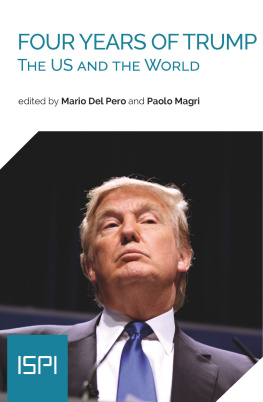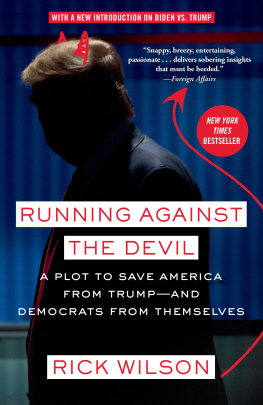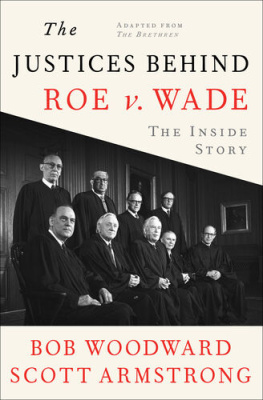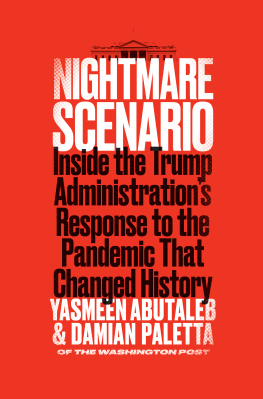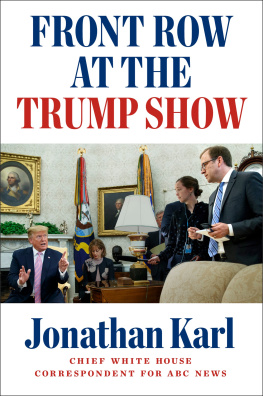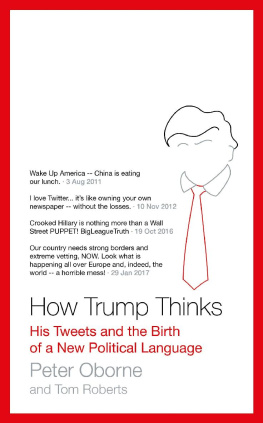Introduction
Mario del Pero, Paolo Magri
As November 3rd, the date for the 2020 US presidential election, fast approaches, supporters of President Trump at rallies around the country repeatedly chant: Four more years. Just a few months ago, many would have branded those voters as fanatics, with Trump sinking in national polls and trailing Joe Biden, the then-Democratic hopeful, by 10 percentage points. By early September, however, the gap between the two contenders had narrowed to 6 points and while still solid, Bidens lead in key battleground states is also challenged.
Whether Trump manages to seal another four years in office, or Biden wins a rare victory against an incumbent President (in the US this has happened only three times in the last century), it is high time to take stock of what has been a highly unpredictable and unconventional four years. Unpredictability has been the trademark of Trumps presidency even before inauguration day, as the President managed to beat Hillary Clinton against the bets of most observers, who in October 2016 gave Clinton an almost unassailable lead. Unpredictability has also been an involuntary distinguishing mark of the latter part of Trumps four years in office, with the worst global pandemic in over a century striking the US as well as the world, and forcing the American government to respond to one of the most dramatic health and economic crises in history.
It would be tempting, but futile, to look at Trumps presidency mainly through the lens of the novel coronavirus, and its global reverberations. Yet, it is indisputable that the Covid-19 pandemic and its impact have the potential to affect the results of the November elections, and to go far beyond that at the international level, maybe even reshaping the regional and global balance of power. Within the United States, a domestic economy that was recording the best labour market conditions since 1969 has seen unemployment levels skyrocket from 3.5% in February to almost 15% in April, only to recover somewhat to around 9% by August. On the healthcare side of the equation, as of mid-September the official number of deaths from Sars-CoV-2 infections in the US hovered at around 200,000, almost double the number of casualties that the American public experienced during World War I (117,000), and nearly four times those related to the Vietnam war (58,000).
Nonetheless, it is important to look beyond the coronavirus, and beyond the Presidents unconventional style. Doing so reveals that on many levels Trumps policy choices have been marked by both continuity and change from previous American administrations. Indeed, in many policy fields even under Trump continuity reigned supreme. That is to say that even a most unconventional President who promised to drain the swamp has found itself embroiled in the tangled realities of government and that while his tweets might suggest otherwise, many policy choices had to be toned down, or were axed altogether by Congress. In economic terms, while the lowest unemployment levels in decades have been reached during Trumps mandate, the countrys performance under the President has in many respects been a linear continuation of the Obama recovery, with lax monetary policies supporting an unabated (if dangerous, given current public debt levels) fiscal expansion. In the foreign policy field, Trumps strategic disengagement from conflict theatres in the Middle East, and distrust of NATO, were reminiscent of Obamas leading from behind strategy and of many other US presidents complaints of European allies who allegedly were not doing enough to support the Transatlantic Alliance and share the burden of a common security policy.
As for change, Trump has undoubtedly had more latitude to break with tradition in the foreign policy realm. He tried to negotiate a deal directly with the North Korean leadership, launched an all-out trade war with China, alternatively warmed up and cooled down relationships with Russia, and withdrew from the Iran nuclear deal, bolstering the US alliances with Saudi Arabia and Israel instead. As of late, the Trump administration broke with tradition even in its traditional balancing act between Israel and Arab countries, managing to convince the United Arab Emirates to fully normalise its relations with Israel with Bahrain soon following suit. Even so, Trump has never been alone in taking these decisions, which can of course be criticized but need to be understood and placed into context. And, as a chapter in this Report reveals (see below), even some policy choices that might be labelled as change at first sight, such as restrictions on regular immigration and a staunch fight against irregular migratory flows, may be traced back to decades-old trends.
This Report aims to analyse continuity and change during Trumps four years, both at the domestic and international level. What are the longer-term trends that this unconventional president has had to ride through? What was his trademark, and what could be his lasting legacy?
In the first chapter, Gary Jacobson describes how the United States became more and more polarized during the Trump era. As a matter of fact, the growing divergence between the preferred policies of Republicans and Democrats was an already visible trend for the past three decades. But the pugnacious, unscripted style that had enabled Trumps hostile takeover of the Republican Party further polarized the country, as the President doubled down on his strategy of mobilizing extreme sentiments. As Jacobson argues, Trumps actions aggravated partisan, racial, and regional conflicts: rather than a unifying presidency, Trumps has been, so far, a dividing one and divisive one. As a result, even the Covid-19 pandemic that hit the country in such a devastanting form did little to soothe divisions, leaving existing political fault lines almost untouched as the election date draws nearer.
Turning to the economic performance of the country under Trump, Michele Alacevich considers the Covid-19 pandemic as a massive stress test, which shone a spotlight on several deeply problematic characteristics of the American economy and society. Alacevich points at several instances of continuity in economic policy and performance between Trump and Obama. For one, Trumps economic results followed in the footsteps of the previous administration at least until the novel coronavirus hit the country. However, continuity is visible also in a second, troubling trend: that of rising inequality, made even worse by Trump through the 2017 tax reform, which had highly regressive effects, and his attempts to undermine Obamacare (i.e., the Affordable Care Act).

